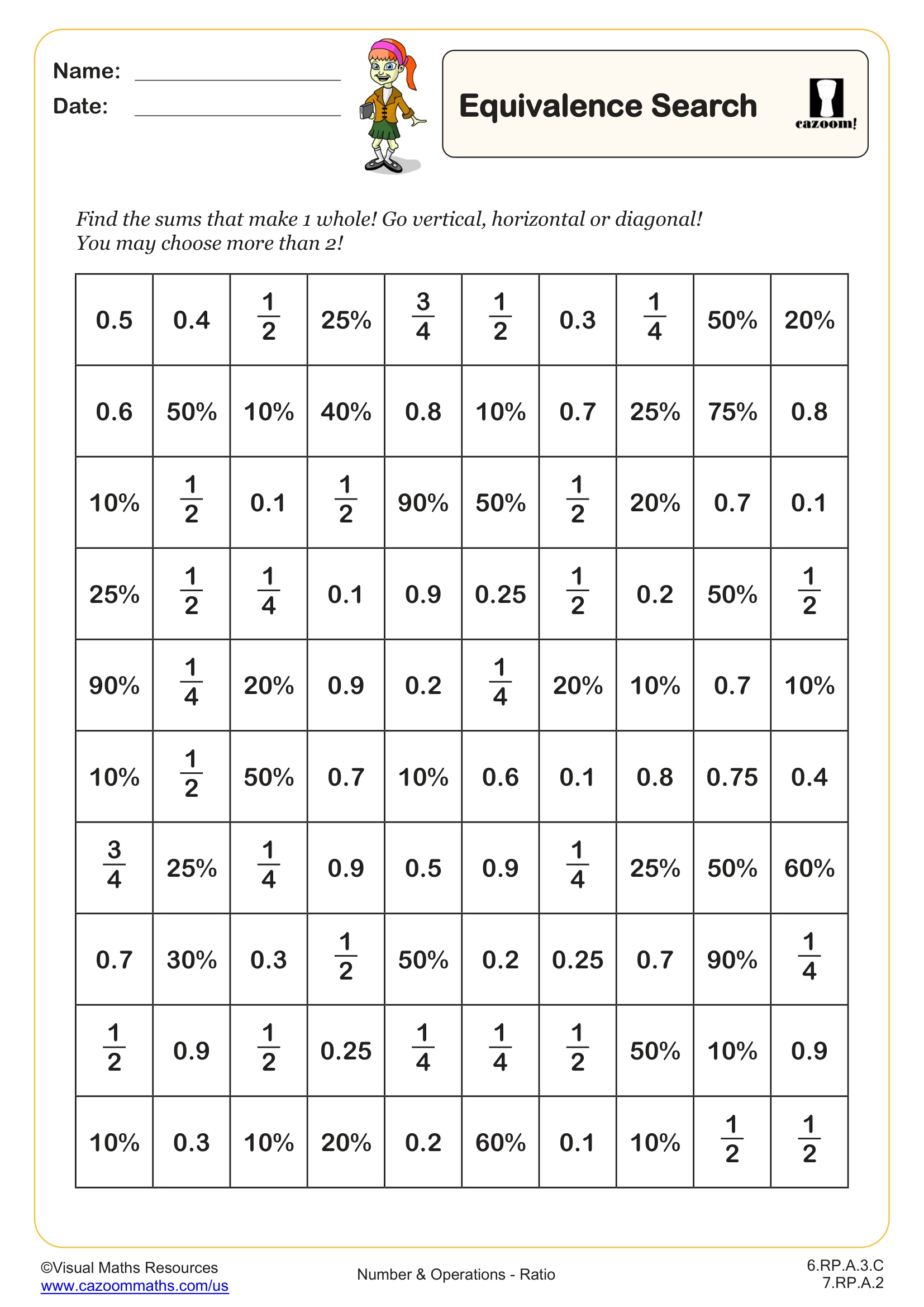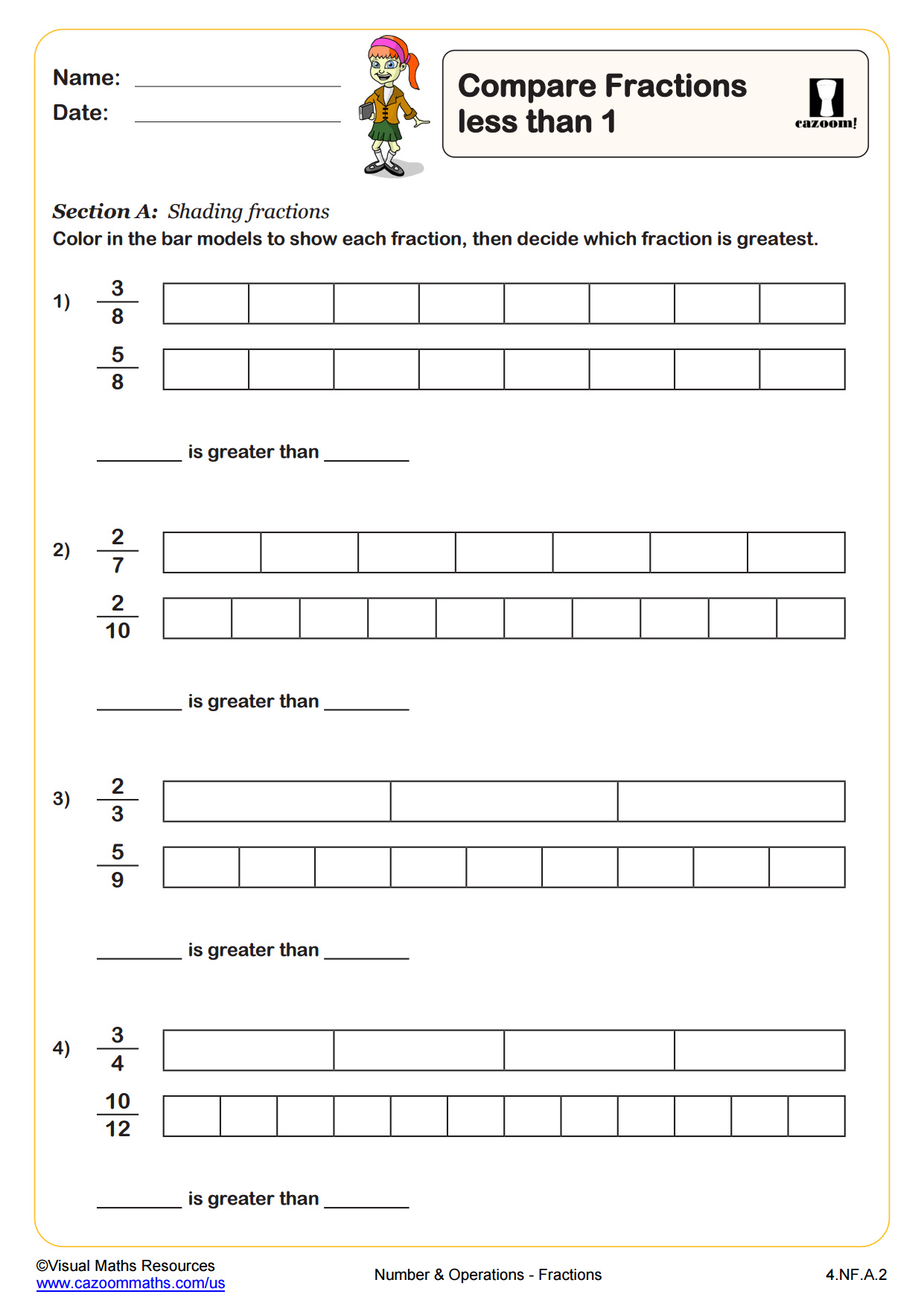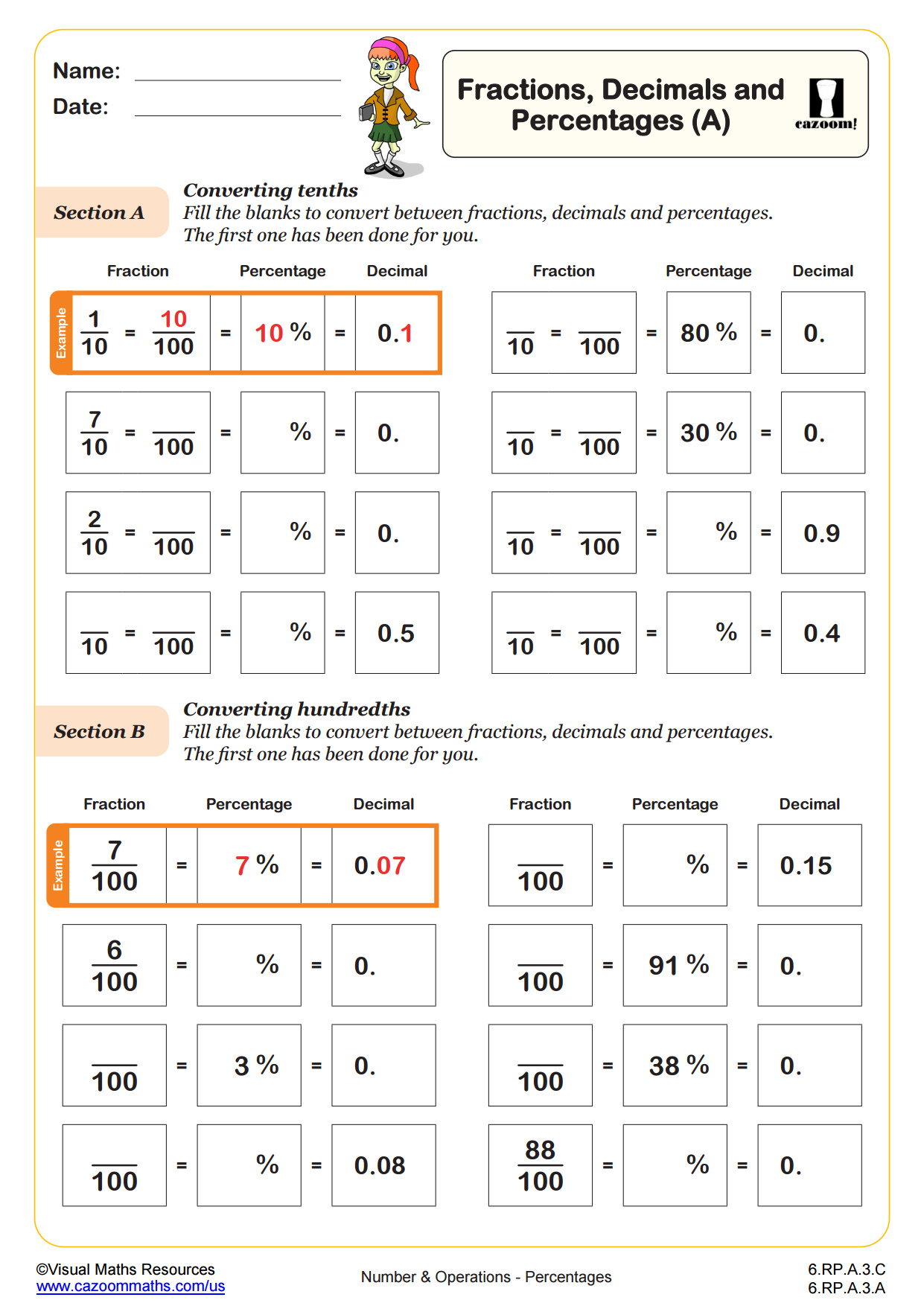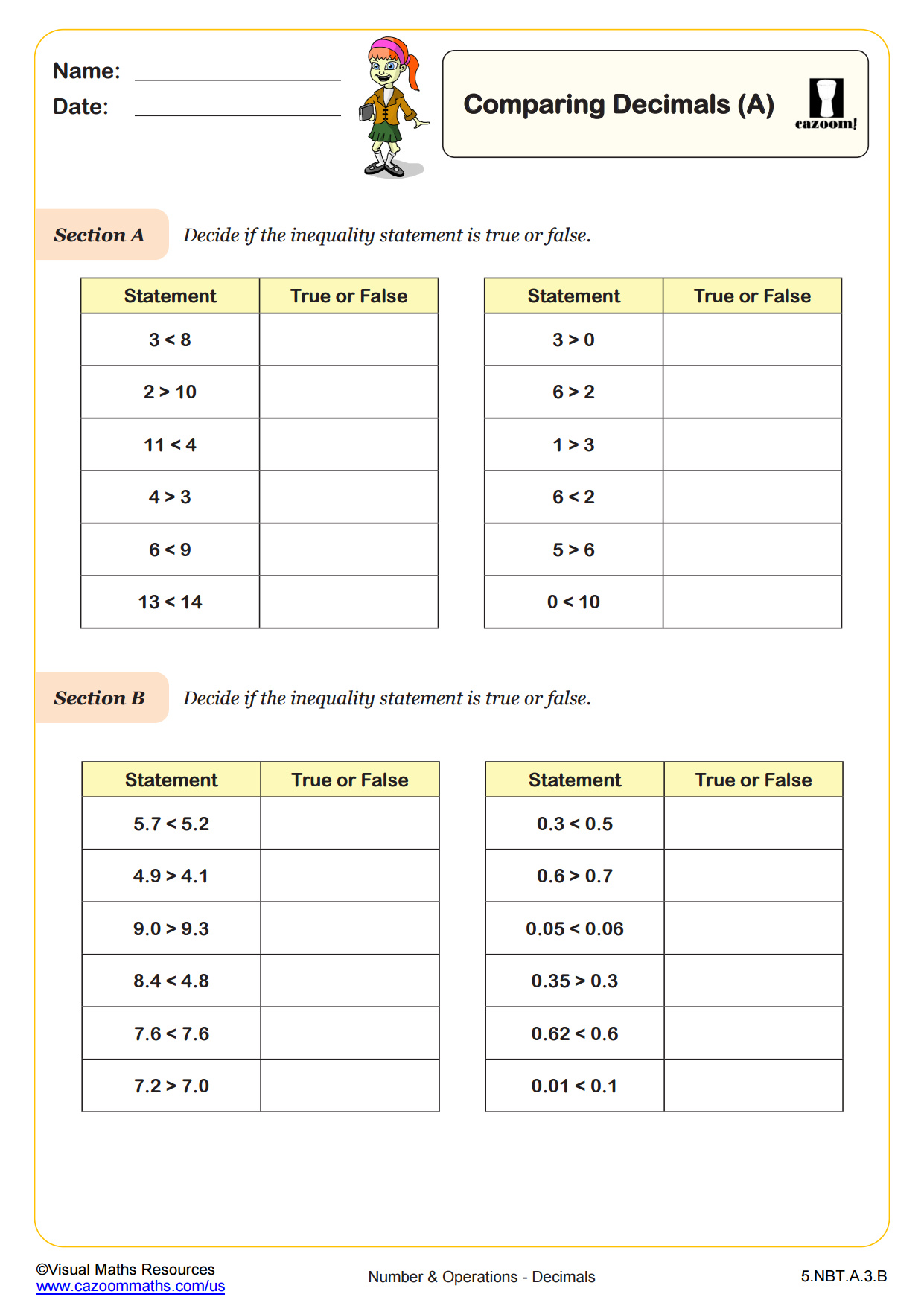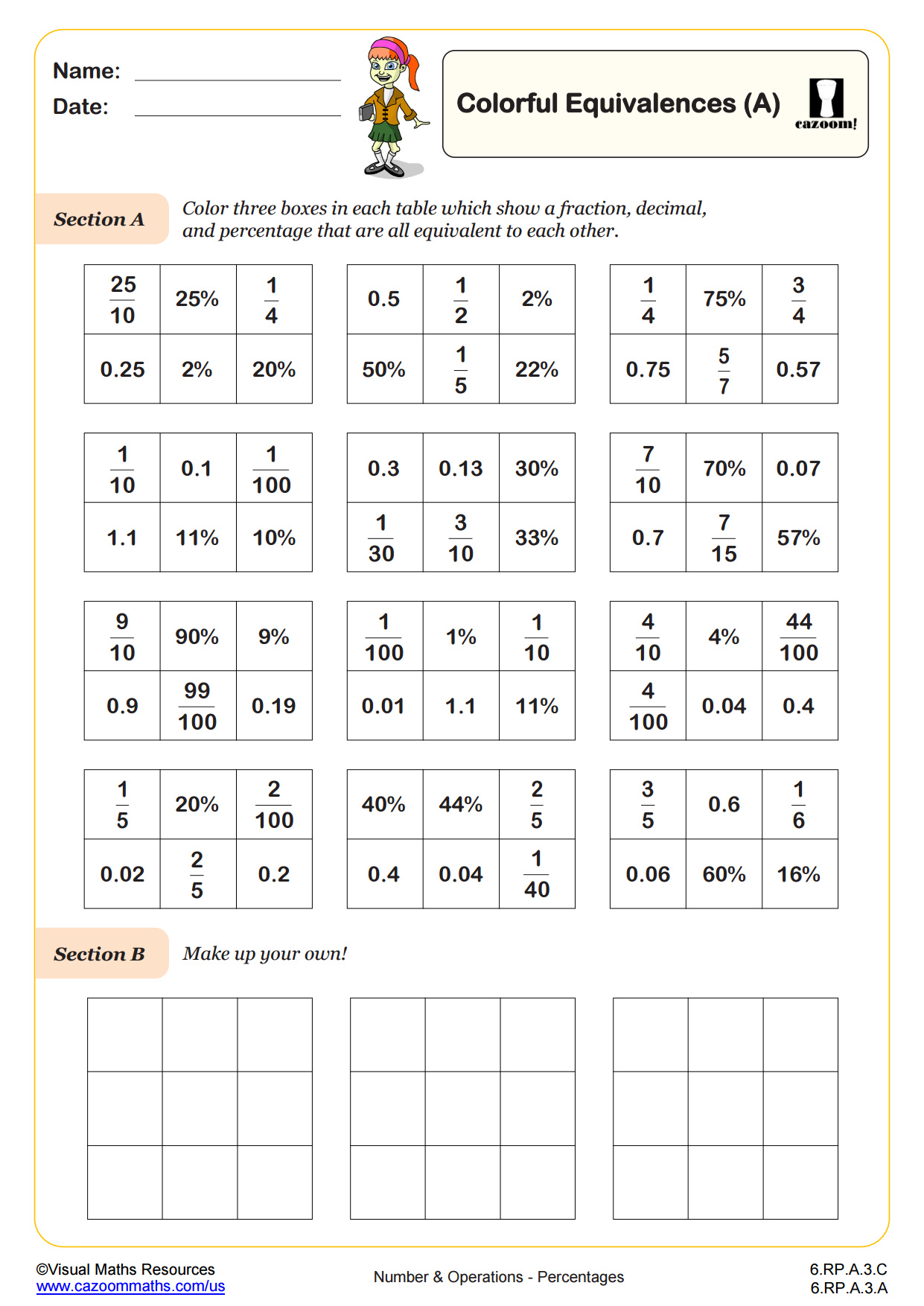Loading...
Back to:
Equivalence Search (A) WORKSHEET
Suitable for Grades: 6th Grade, 7th Grade
CCSS: 6.RP.A.3.C, 7.RP.A.2
CCSS Description: Find a percent of a quantity as a rate per 100 (e.g., 30% of a quantity means 30/100 times the quantity); solve problems involving finding the whole, given a part and the percent.
Recognize and represent proportional relationships between quantities. a. Decide whether two quantities are in a proportional relationship, e.g., by testing for equivalent ratios in a table or graphing on a coordinate plane and observing whether the graph is a straight line through the origin. b. Identify the constant of proportionality (unit rate) in tables, graphs, equations, diagrams, and verbal descriptions of proportional relationships. c. Represent proportional relationships by equations. For example, if total cost t is proportional to the number n of items purchased at a constant price p, the relationship between the total cost and the number of items can be expressed as t = pn. d. Explain what a point (x, y) on the graph of a proportional relationship means in terms of the situation, with special attention to the points (0, 0) and (1, r) where r is the unit rate.
Recognize and represent proportional relationships between quantities. a. Decide whether two quantities are in a proportional relationship, e.g., by testing for equivalent ratios in a table or graphing on a coordinate plane and observing whether the graph is a straight line through the origin. b. Identify the constant of proportionality (unit rate) in tables, graphs, equations, diagrams, and verbal descriptions of proportional relationships. c. Represent proportional relationships by equations. For example, if total cost t is proportional to the number n of items purchased at a constant price p, the relationship between the total cost and the number of items can be expressed as t = pn. d. Explain what a point (x, y) on the graph of a proportional relationship means in terms of the situation, with special attention to the points (0, 0) and (1, r) where r is the unit rate.
Equivalence Search (A) WORKSHEET DESCRIPTION
In this equivalence search students have to find fractions, decimals and percentages that sum to 1.
It displays quarters, one half and tenths. Sums can be made of more than 2 numbers, horizontally, vertically and even diagonally. There are over 35 to find. Teachers and parents can make up the rules, can a number be used more than once?
This search is perfect for some classroom competition and is a brilliant way of cementing fluency between fractions, decimals and percentages.
